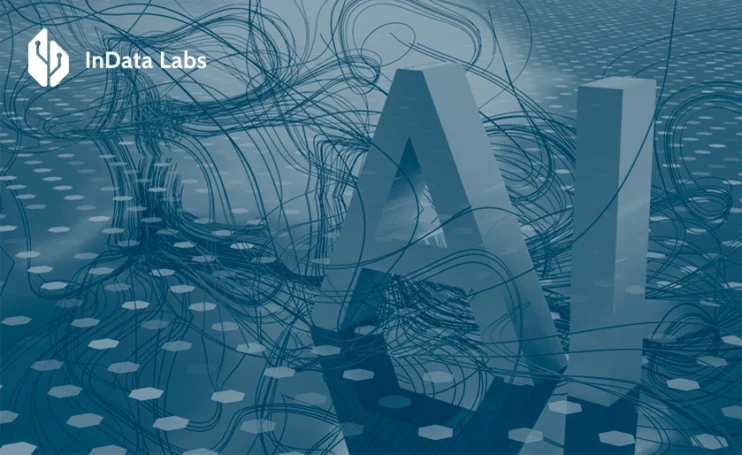Artificial Intelligence (AI) has revolutionized numerous industries, empowering businesses to drive innovation, make data-driven decisions, and deliver enhanced experiences. One such powerful framework that has emerged is AI TRiSM. This framework is intended to build confidence, reduce risks, and improve security in the rapidly developing field of artificial intelligence. Although the global AI trust, risk, and security management market was only valued at $1.7 billion in 2022, it is projected to reach $7.4 billion by 2032, growing at a CAGR of 16.2% from 2023 to 2032.
In this blog post, we will explore the pillars of the AI TRiSM, its importance, and applications, and discover the potential it holds for transforming industries.
What is AI TRiSM?
AI TRiSM definition is quite simple – it stands for Artificial Intelligence Trust, Risk, and Security Management. It is a framework that focuses on building reliable and secure AI systems and helping businesses prevent risks with AI technology. AI TRiSM encompasses various principles and practices aimed at addressing the challenges associated with AI, such as trust, transparency, fairness, accountability, privacy, security, and compliance with regulations.
AI TRiSM prioritizes the following principles:

The pillars of the AI TRiSM framework
AI TRiSM pillars form the foundation of the framework, ensuring that AI systems are developed and deployed with integrity and accountability. Gartner has highlighted the four pillars forming AI TRiSM today. They include:
Explainability
Explainability focuses on making AI systems transparent and understandable. It involves developing AI models and algorithms that can provide explanations for their decisions and actions, allowing users to comprehend the reasoning behind AI-generated outputs.
Result: By providing explanations, organizations can build trust, improve accountability, and address concerns related to bias, fairness, and ethical considerations in AI systems.
ModelOps
ModelOps focuses on maintaining the quality and performance of AI models, addressing such issues as model drift, bias, and unintended consequences. It encompasses all the processes including model development, testing, deployment, monitoring, and maintenance.
Result: By implementing effective ModelOps practices, organizations can ensure that AI models are reliable, accurate, and up-to-date. It enables companies to manage and mitigate risks associated with AI deployment.
Security

Result: By ensuring the security of AI systems, organizations can protect sensitive data and prevent unauthorized access or manipulation.
Privacy
AI systems often deal with vast amounts of personal and sensitive data, which makes privacy considerations not less important. They involve implementing privacy-preserving techniques, obtaining informed consent, and complying with data protection regulations.
Result: Protecting privacy in AI systems helps businesses reduce the risk of fines and financial losses, and avoid data breaches and other associated costs.
When should I implement AI TRiSM models?
There are several cases when AI TRiSM algorithms will be of greatest help. First, if you are already leveraging AI technologies in your business and want to enhance their performance. Secondly, if you are considering the implementation of AI and want to be sure of its beneficial effect on your company’s growth.
To put it into bullet points, the reasons for going for AI TRiSM are the following:
-
If your AI systems make impactful decisions
Does the well-being of individuals, a community, or the whole society depend on what your AI model says? In this case, it’s essential you ensure transparency, accountability, fairness, and privacy of your AI system. Leveraging the potential of AI TRiSM will help handle sensitive data, influence critical decisions, minimize potential harm, and maximize positive outcomes.

Source: Unsplash
-
If your industry has stringent compliance regulations
AI TRiSM is particularly beneficial for regulated industries or jurisdictions where compliance with ethical and legal requirements is mandatory. Adhering to its principles helps organizations demonstrate their commitment to responsible AI practices, build trust with stakeholders, and mitigate potential legal and reputational risks associated with AI deployment.
-
If you handle sensitive data
Data volumes are consistently growing, while data privacy is prioritized more than ever before. Thus, implementing AI TRiSM models is essential to protect this data and ensure privacy. Businesses that incorporate data protection measures can maintain the confidentiality and integrity of user information, comply with privacy regulations, and build trust with customers.
-
If your business specifics prioritize ethics and fairness
AI TRiSM models provide a framework for businesses to address fairness and ethical considerations associated with AI technology. Implementing AI TRiSM ensures that your AI systems respect human values, avoid harm, make unbiased decisions, and align with societal norms. As a result, you can navigate complex ethical dilemmas and make responsible decisions regarding AI deployment.
-
If you want to adopt AI technology but are uncertain about its pitfalls
Although AI has penetrated all industries and spheres, it is still facing some challenges in its successful implementation globally. People are still having doubts about the algorithms’ ability to protect data privacy, how unbiased they are, and whether we can trust AI enough to delegate important decisions to its algorithms. For this reason, AI TRiSM is gaining momentum nowadays, enhancing its trustworthiness, security, and other factors.
Top AI TRiSM examples and applications
Artificial intelligence has proven its prominence across industries. More and more companies are facing AI-based decision-making, technology trust, and AI security concerns. This encourages many businesses to incorporate AI TRiSM techniques to stay sure the modern advances are giving the maximum assistance.
Let’s take a look at some of the most common applications of AI TRiSM nowadays:
Healthcare
It seems like the health sector combines all the factors that necessitate the implementation of AI TRiSM. For instance, treatment recommendations and diagnostic assessments are multiplied in their quality with ethical decision-making and bias mitigation. Companies like IBM Watson Health have implemented AI TRiSM to assist healthcare professionals in making informed and ethical decisions. Meanwhile, Stanford University researchers have used AI TRiSM techniques to detect and mitigate bias in algorithms used for predicting medical outcomes.

Source: Unsplash
What’s more, ensuring data privacy is essential, as healthcare data is usually made of very sensitive patient information. This concern is specially brought up by companies leveraging predictive analytics and chatbots for better managing information and improving customer service. Thus, appropriate security safeguards are adopted to maintain privacy like enhanced compliance monitoring and access controls.
Finance & banking
Financial AI systems can be significantly enhanced in their interpretability and transparency using top-notch algorithms. For example, the Goldman Sachs bank has implemented AI TRiSM practices to ensure clear explanations and justifications, automate and advance their financial decision-making.
The process of taking out loans in banks fell under smart automation as well. Companies, e.g. FICO, adopt bias detection and mitigation systems to detect and address biases in credit scoring algorithms and promote fair lending practices.
The finance sector also falls under strict compliance regulations. That’s where AI TRiSM comes in handy, as it helps eliminate human error, and closely comply with regulatory rules. This was done by JPMorgan Chase, which utilized AI TRiSM to ensure compliance with regulations like anti-money laundering (AML) guidelines and Know Your Customer (KYC) automation processes.
We shouldn’t overlook the significance of data security and the risks of cyber attacks in banking. That’s why at the core of Wells Fargo’s cybersecurity strategy lies an AI-powered threat detection and response platform. It utilizes advanced algorithms to analyze and process vast amounts of data, detect anomalies, and indicate malicious activities.
Retail & E-commerce
AI TRiSM and machine learning in business analytics allow retail and E-commerce businesses to personalize recommendations and customer experiences. For instance, Amazon utilizes AI models to increase personalization in their product recommendations while avoiding discriminatory practices.
In addition, the technology proved useful for safety and risk management in retail. Some AI TRiSM companies, like Walmart, leverage it to enhance product safety by detecting and recalling potentially unsafe products.
The technology is a weighty help for sellers in terms of marketing analytics and predictive analytics in business, too. Aware of future trends in the market and understanding the reasons, sellers can work out effective strategies and get a tangible increase in their profits.

Source: Unsplash
Education
Biased attitude has always been a worrying concern in education. To mitigate this, companies integrated AI TRiSM models. A good AI TRiSM example is Coursera which uses AI TRiSM techniques to address potential biases in automated grading systems, ensure fair assessments, and reduce discrimination.
Additionally, quality learning is about comprehensible explanations. AI TRiSM promotes these aspects as well increasing the transparency and interpretability of educational AI systems. One of the good use cases of AI TRiSM is Knewton, an educational company in the U.S., which developed AI-powered educational platforms. Their platforms provide explanations for recommendations, helping students understand the reasoning behind personalized learning suggestions.
Energy, power generation, and utilities
This sector is in particular need of high-end AI technologies, with constant monitoring, high data protection, and strict regulatory standards required there. For this reason, many companies adopt AI TRiSM Risk Management solutions to optimize maintenance plans, reduce downtime, forecast energy load, and manage grid operations efficiently. Such a system was deployed in a Chinese company and has demonstrated outstanding results in terms of fault detection.
In addition, it enables effective management and optimization of energy sources, optimization of energy consumption patterns, and reduced peak loads. With these systems, businesses can monitor grid operations in real-time and predict power outages in the grid to maintain stability and reliable power distribution.
The takeaway
We can observe a rising need for AI TRiSM algorithms entailed by increasing data security, privacy standards requirements, and expectations from AI systems. Prioritizing safety, transparency, and accountability, AI TRiSM is the key to addressing numerous AI-related concerns.
The technology’s applications are vast, being utilized across many domains today. The near future will observe further spread of its adoption. As AI continues to rapidly advance, implementing AI TRiSM becomes increasingly beneficial to businesses in terms of reliability, cost reduction, stability, and safety.



